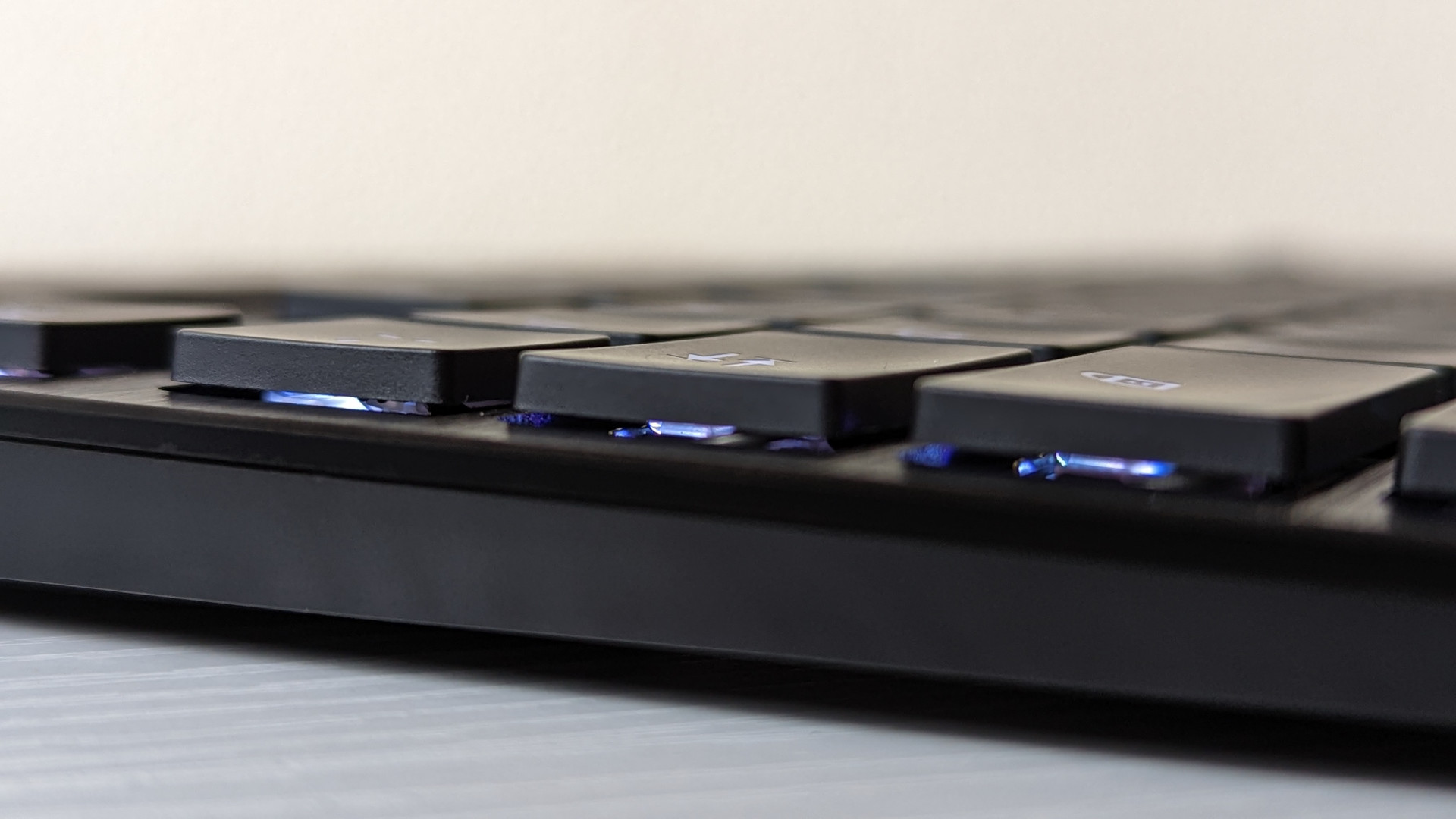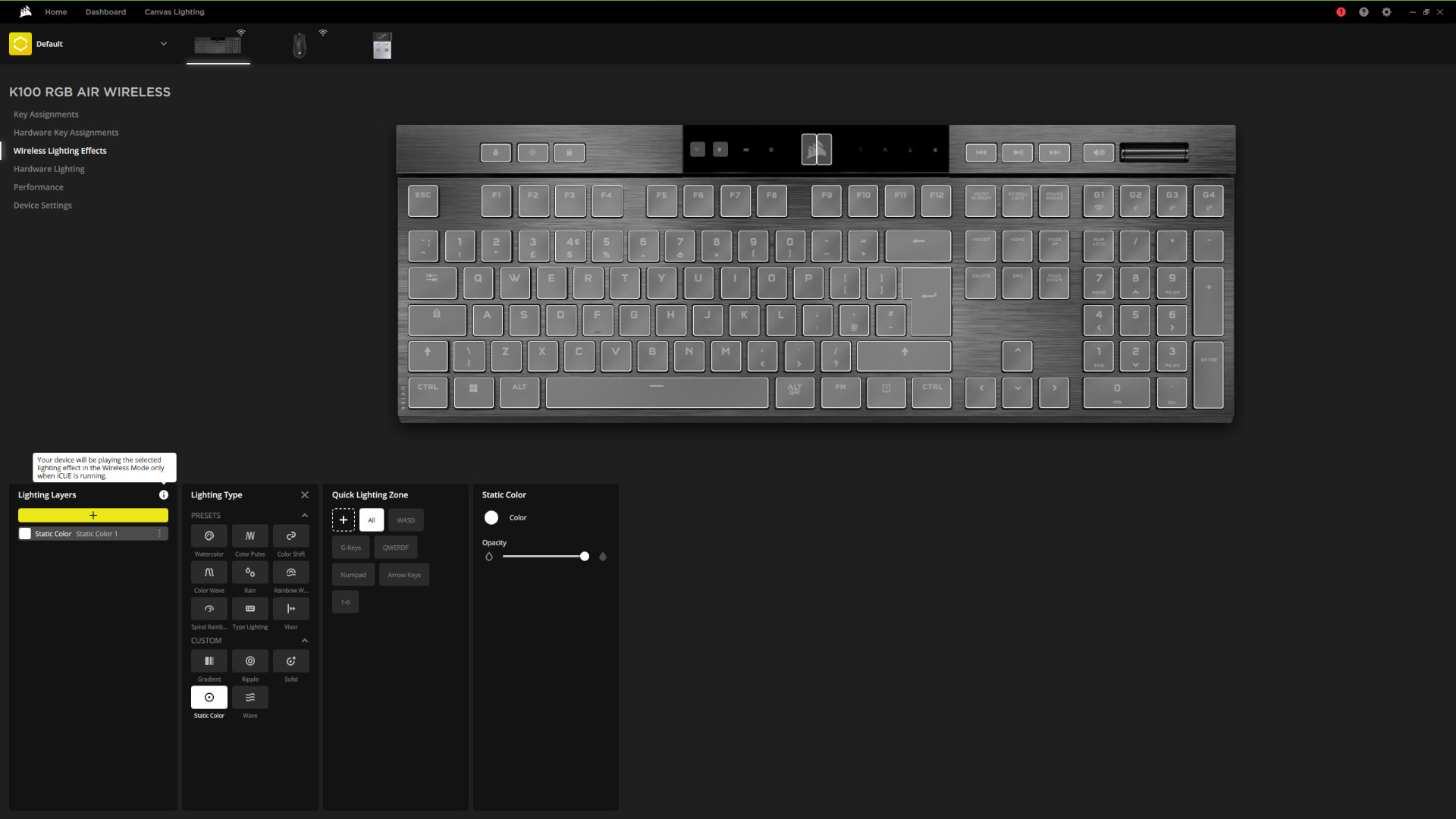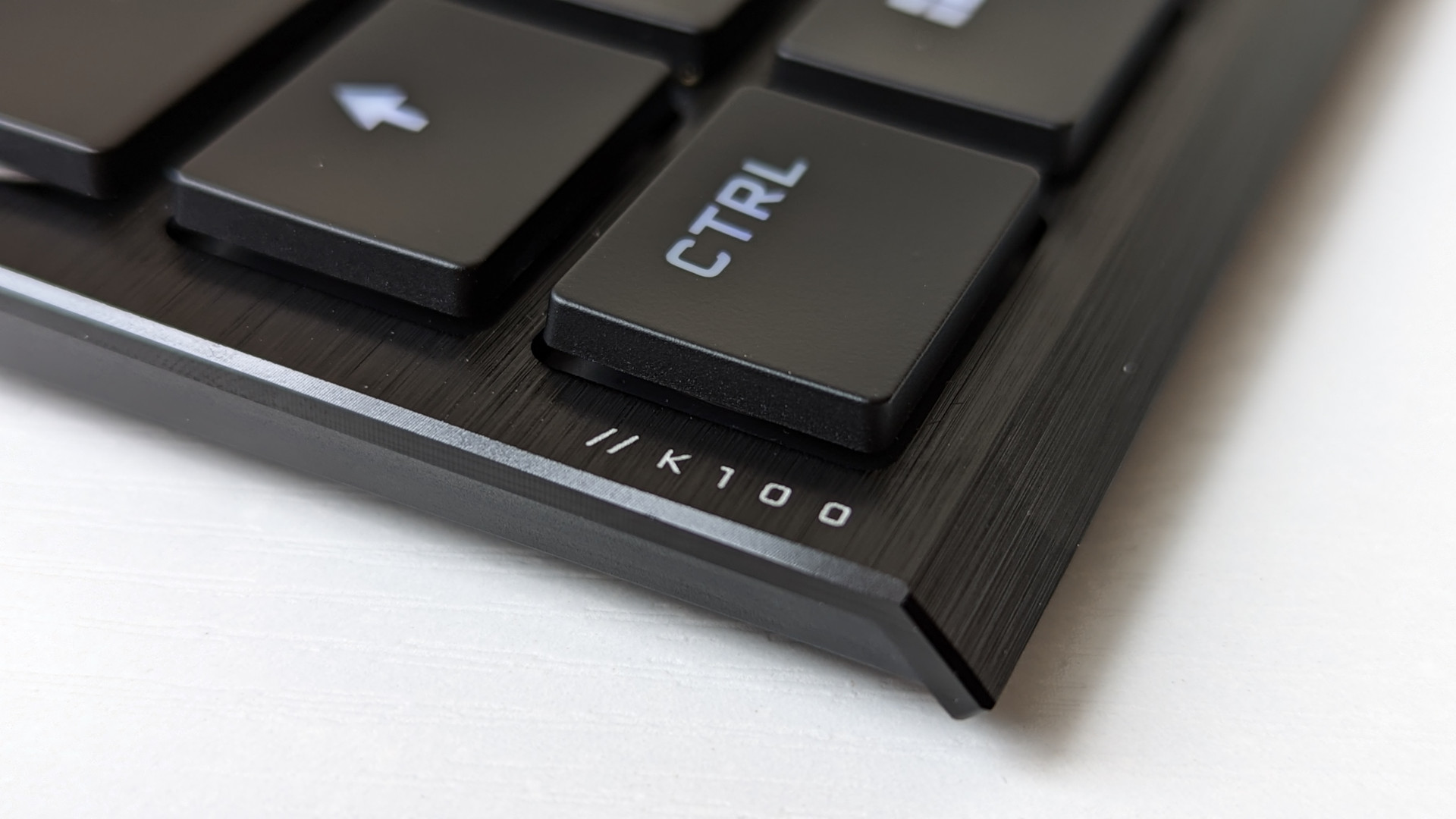The Corsair K100 Air is unlike any keyboard you’ve used before, with a design that’s more reminiscent of an Apple Magic Keyboard than a gaming device. That doesn’t mean disdain for the device. Quite the opposite, in fact, as it’s impressive to see how much performance it packs into its slim, professional-looking chassis.
Over the last few weeks I’ve been kicking, strafing and just about anything else you want to do with the K100 Air. While my thoughts on the keyboard have changed over the course of its use, the satisfaction of a full wireless setup is still a welcome constant.
While that sentiment is partly due to finally saying goodbye to cables, it’s also a testament to the level of quality in Corsair’s newest chiclet offering. Beneath its sleek exterior lies the gaming performance that the best wireless mechanical keyboard is looking for, but there are also a few things holding it back, and I’d like to see future models addressed and improved upon.
| Advantage | the least |
| Ultra Low Profile Cherry MX Tactile Switches | Dear |
| Up to 50 hours of battery life | Some keys tend to click |
| Smart and elegant design | Volumetric roller feels flimsy |
Design
The Corsair K100 Air features a sleek, streamlined design that allows the keyboard to easily fit into whatever environment you want to use it in, whether it’s as part of your professional workspace or as the master of your gaming setup. quality here that almost anyone can appreciate, and fun enough not to feel boring or corporate.
The brushed aluminum frame really helps sell the K100 Air as a premium product, providing a subtle contrast between the body and the keys. It also gives the keyboard a clean look, both figuratively and literally, as I don’t think I’ve seen a single fingerprint on the casing, even after extended use. It’s also solid, with no noticeable signs of flex, despite being as thin as 17mm and the thinnest at 11mm remarkably thin.
However, you are not bound by the dimensions of this smartphone, as the K100 Air has two levels of adjustment via retractable rubber-coated plastic feet. As someone who prefers to play at a slight incline, I don’t find this particularly helpful, but since trying both settings, I haven’t encountered any stability issues.

On the top of the K100 Air, you’ll find dedicated keys to switch profiles, adjust brightness, and lock the Windows keys, as well as media playback controls and a volume rocker. They all have a nice feel to the touch, but I wish there was a little more resistance on the roller as it’s too loose for my liking.
Between these groups of keys is a clear plastic block with LED indicators for caps lock, battery life, etc. Unfortunately, its glossy finish attracts a bit of grease and dirt, which can mar the K100 Air’s pristine appearance. but otherwise it’s a well placed and readable setup.
Like any high-end wireless keyboard worth owning in 2022, the K100 Air has a dedicated case for its wireless adapter. This makes traveling with the card much easier, allowing you to get the most out of your device if its Bluetooth connectivity isn’t enough. It’s a shame Corsair hides a USB-C port nearby, which can make it difficult to use some charging cables, but that’s a fairly minor flaw in a very good overall design.

The functions
Corsair offers three connectivity options for the K100 Air: 2.4GHz, Bluetooth, and wired.
For a 2.4 GHz connection, you need to connect the included Slipstream Wireless USB-A USB Adapter to your Windows or Mac PC. Not only does this dongle match the K100 Air, it also has room to connect to other compatible wireless devices. , saving you money on USB ports. This is a boon for me as it means I can connect the K100 Air to my gaming PC as well as my Corsair Saber RGB Pro Wireless via a single point of contact.
However, this is not without its drawbacks, as multiple logins via the same key mean potentially slower polling rates. Since it doesn’t have much impact on performance, with a 1ms spike, this tradeoff is extremely easy to swallow.
Those who want to get the most out of the K100 Air will, paradoxically, want to opt for a wired connection first. This unlocks the Corsair Axon technology within the device, which increases the keyboard’s polling rate from 2000Hz to 8000Hz. I have to admit I don’t really see the difference between the two, but it’s always nice to know you have the technical advantage.
Ironically, Corsair has equipped the K100 Air with the old Bluetooth 4.2 instead of the more modern incarnation of the protocol. It’s certainly good enough to plug into my phone, laptop, and any other device I need to type quickly, but this solution gets in the way when competitors like the Razer Deathstalker V2 Pro offer newer, faster built-in versions.
Switching between these wireless modes is very simple and requires you to press a function key and one of the four “G” keys above the number pad. These same keys can also be used to store and trigger macros on the K100 Air, which can be easily programmed with or without Corsair iCue software.
This also applies to the K100 Air’s RGB LEDs, as you can switch between different preset lighting effects by pressing the function key in combination with the number keys. You can also adjust the direction and speed of this effect.
Performance
Beneath the K100 Air’s rubberized keycaps is a collection of ultra-low-profile Cherry MX tactile switches that debuted in the desktop gaming keyboard space after proving their worth on gaming laptops like Corsair’s Voyager a1600. Unfortunately, I am equally impressed and disappointed with them.
Let’s start with the positives, like the 0.8mm actuation distance, which helps make your actions as quick as possible. This will make the K100 Air more suitable for gaming than typing for some people, but I haven’t noticed an increase in typos in my work (and I have plenty of occasions to do so).
I find Corsair to be a match for the K100 Air, with a slightly firm feel that doesn’t tire my hands after long gaming or typing sessions. It’s a bit more than I’m used to on my Razer Huntsman V2, but that’s to be expected given the difference in space between the two cards.

The K100 Air doesn’t get in my way during competitive Apex Legends, Call of Duty: Warzone, and League of Legends matches. The quality and consistency of its wireless connections haven’t let me down noticeably yet, to the point where I might as well use the wired model.
So what’s wrong with these switches? In a word: crack. To be clear, Corsair insists that this issue should be isolated to my first production device, which I tend to believe. However, that doesn’t change the fact that the K100 Air in front of me looks like a little mouse on the inside. It doesn’t seem to affect the small keys as much, but the spacebar in particular unfortunately plagues me with a terribly high pitch. I don’t have an easy way to fix this either, because you can’t easily remove the keys.
While you may find that it’s not too bad when using headphones, it’s not the kind of experience you’d expect from a flagship. Also, a slight click can be heard on some of the other larger keys, such as Enter and Backspace, an issue that many manufacturers are currently unaware of.
At least the battery life is good: 50 hours using 2.4 GHz with RGB LEDs on, up to 200 hours without a backlight. Charging can take three to five hours, but since the K100 Air’s performance improves a bit when it’s plugged in, having a USB-C cable handy shouldn’t be a hassle.

software
It is not necessary to launch Corsair iCue when using the K100 Air, but I would definitely recommend doing so as it gives you more comfortable and granular control over the keyboard and the Slipstream key.
You can find your usual range of options here, including key mapping, lighting control, and the ability to customize and save profiles to the K100 Air’s 8MB onboard memory. Outside of this range, the only thing I bothered to set was the “Sleep Mode” timer and the “Auto Brightness Control” feature disabled.
Usually, in this part of the review, I would say, “Synchronizing the RGB effects of my Corsair devices, including the K100 Air, is very easy,” but unfortunately, that’s still not entirely true. At the time of writing, you will need to connect a keyboard to access the “Lighting Link” effects due to bandwidth limitations. However, Corsair says that it plans to introduce this feature shortly after launch.
You will need to connect a keyboard to access “Lighting Link” effects due to bandwidth limitations. However, since this limitation doesn’t interfere with my wireless mouse, omitting it is quite confusing.
I’m the kind of person who leaves my RGB at a static color and it gets the job done, but I don’t expect this lack of functionality from a keyboard that costs as much as the K100 Air.

Verdict
The Corsair K100 Air is the most expensive gaming keyboard in the company’s range at $279.99 / £279.99 / €299.99. That makes it more expensive than its main competitors, namely the Razer DeathStalker V2 Pro and the Logitech G915, and I don’t know if that justifies the higher price.
The former features optical switches similar to the ones I loved so much on my Huntsman V2, while the latter is often heavily discounted due to age. More importantly, none of them suffer from the screeching I mentioned earlier.
For most people, it is better to choose the best gaming keyboard with standard profile switches. These models tend to be much cheaper and offer better value than any of the ones I’ve mentioned in these last couple of paragraphs. Corsair is doing very well with the K100 Air and I sincerely hope that they can fix their issues and keep the price down with a pro model or some sort of V2.
corsair k100 air
Great battery life, sleek design elements, and ultra-low-response gaming keyboard switches are held back by flimsy, flimsy keys and a price tag.
Source : PC Gamesn

